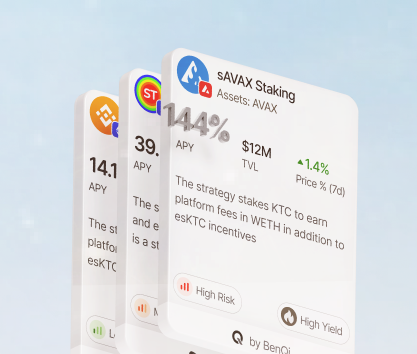Physical infrastructure projects in the DeFi ecosystem are some of the most interesting from the end user’s point of view because they provide a tangible utility that impacts personal finances. The surge in cloud technologies was a net positive for the global economy with many businesses, regardless of their scale, being able to offload their IT processes to the cloud without the need to increase overheads.
On a much lower tier, individual users are also enjoying the benefits of accessible data processing and storage. However, prices are going up with subscription costs also reaching dangerously high numbers. For instance, Google Drive is charging $9.99 per month in 2024 with annual payments reducing this cost by just 17%. It seems like a good deal, but paying so much for storing just 2TB of data is outlandish.
Users have to deal with increasing costs since over 92% of them employ cloud storage on a daily basis with up to 76% citing it as critical for their jobs. The survey conducted by GoodFirms also reveals that over 50% of all cloud users are concerned with privacy and data safety. It is noteworthy that these numbers have a tendency to grow over time. We can safely imagine a world where 99% of all people use online storage solutions.
The arrival of decentralized storage
In theory, anything can be tokenized and ordered using blockchain technology. One of the most obvious uses for real-world infrastructures is storage. The first protocols started appearing over two decades ago with the earliest concepts explored as early as the 1960s. For instance, the Incompatible Timesharing System managed inter-machine file systems in a transparent manner by the end of the mentioned decade.
In 1986, IBM was using its Distributed Data Management (DDM) architecture to ensure data safety and effortless accessibility. Enthusiasts were also quite proactive throughout the decades when computers became widely available. Peer-to-peer protocols allowing users to build advanced file systems with some elements of decentralization started appearing in the 1990s with notable mentions like 9P, AFS, or DCE/DCF.
These early systems were used to address two critical issues with storing data locally and wholly on separate servers:
- No single point of failure. Imagine if you have all your precious photos on a single hard drive. If the equipment fails, you will lose everything, often, without any chance at recovering information. Distributing information across multiple servers and using replication to ensure redundancy can be incredibly useful and prevent the loss of valuable data.
- Accessibility of storage. Users don’t have to be in the vicinity of hardware to access what they need at the moment. While it seems like something absolutely normal by today’s standards, just two decades ago, the vast majority of people did not have the luxury of accessing their favorite media files or documents without physically interacting with hardware.
At the same time, performance and concurrency, when several users tried to access and edit the same file, remain somewhat unsolved issues to this day. Addressing these particular problems is still a challenge and we don’t have any adequate solutions to lower speeds of interaction with data and make concurrent access a reality without queueing user requests.
What is blockchain storage?
In 2006, the first real decentralized storage solution was designed by MaidSafe. Later, it was easily integrated into the crypto industry. In August 2024, MaidSafeCoin, which provides utility to end users of the platform, has a sizeable $180 million market cap and trades at $0.43 per token. While it is still working as a competitor to centralized cloud storage solutions, the DeFi industry has spawned a multitude of projects that deliver the same or better experience at lower costs and without any centralization.
Decentralization has multiple advantages that improve user experience and make storing information more reliable for those who do not like the idea of losing valuable files. Let’s talk about some of the benefits of this approach to improving cloud storage.
The price of decentralized file storage
The cost-effectiveness of distributed architectures is a proven fact. Since centralized companies have to invest in hardware and pay for significant overheads that include payments for maintenance and security services, decentralized protocols have a competitive advantage due to the absence of many costs associated with running a cloud storage business.
Does it really work?
- Storj is a popular platform that employs a vast P2P network to maintain its data for a fraction of the cost that companies like Amazon and Google have to pay for their infrastructures. In 2023, the company reported that it offers storage at prices 50% lower compared to notable services in this sector of the tech industry.
- Filecoin reported that its capacity reached 13 exabytes in 2023 while prices remained up to 50% lower compared to centralized solutions. Projects like this one attract users who are not willing to pay a premium for a service that can be accessed for much cheaper.
Redundancy and availability in decentralized cloud storage networks
Data is distributed across the whole network that maintains several full copies of everything to ensure that it can be easily accessed. Multiple nodes are online simultaneously. This architecture prevents outages and failures from harming the accessibility of files.
Does it work?
- Arweave offers immutable and tamper-proof data storage that has multiple rounds of redundancy. The proprietary “permaweb” is used for multiple purposes including a copy of the archive created by the Wayback Machine. The blockchain is capable of hosting all sorts of other applications that require data storage and sharing.
- By default, all decentralized storage networks are always available thanks to the redundancy and the distributed nature of service. However, the Global Data Center Survey by the Uptime Institute revealed that over 31% of all tracked data-handling centers experienced an outage at least once in 2022.
The resistance to censorship in distributed storage systems
The immutability of recorded data and the availability of verified copies of files across the network make sure that no one can tamper with files. Many contemporary Web 3.0 social media platforms focus on distributing their content in a way that prevents censorship.
Does it work?
- The InterpPlanetary File System (IPFS) is a widely used protocol that has been around for ages. It is used to save content that might be tampered with in case power-bearing organizations, governments, or individuals try to censor it.
- This issue is quite significant in many countries around the globe. It is estimated that up to 70% of the global population lives in areas where censorship is used by governments and corporations to remove content that could harm them.
Data privacy
The information is handled in a way that it cannot be accessed without authorization. Pieces of files are encrypted and the fragmentation makes it impossible to simply decode a portion of data to get at least some data. It means that you can store whatever you want without revealing your identity or risking credentials since distributed networks don’t collect any information.
Does it work?
- Filecoin uses advanced fragmentation and encryption protocols to ensure that files remain secure and inaccessible to unauthorized parties. Users can purchase space using FIL coins that are publicly traded on marketplaces.
- One of the key reasons for the popularity of Bitcoin and other legacy networks is that they are anonymous and yet trustworthy. The same principle is applied to the idea of distributed cloud storage solutions that do not require users to provide any personal info.
Data security in decentralized storage
The biggest advantage of using decentralization in this industry is the unmatched level of information security achieved through a variety of methods that we will discuss below. Centralized servers have the weakness of being the single point of failure that can be attacked by bad actors. While some centers have backups, it is often not enough to prevent the loss of files.
Here are features of decentralization that help mitigate risks:
- Fragmentation of data and strong encryption. Many protocols use a simple framework of encrypting the whole file and splitting it into multiple pieces that can be stored separately on different drives. At the same time, several copies of these fragments are made to ensure that files remain accessible even if something happens to several nodes.
- Scalable distribution networks. Decentralized systems are good at ensuring that the blockchain remains complete and accessible if at least a couple of nodes remain operational. Centralized centers are putting files at risk by aggregating everything on a hardware infrastructure that can be attacked as a whole.
- Users are in control of data. When it comes to centralized platforms, owners and even low-level technicians can theoretically access and modify files uploaded to the cloud by people. by using advanced encryption mechanisms, DeFi protocols and other types of decentralized projects are able to authorize only those who have keys. A study by McAfee found that over 43% of all cloud service users are concerned that their files are potentially accessible by someone else.
- Audits and transparent operation. Since ledgers can be verified by anyone, it creates an environment where auditors can check if everything is in order without any issues. The integrity of the whole network is achieved thanks to the complete transparency of the blockchain architecture. Many modern networks are excellently auditable.
it is hard to find anyone in the world who does not care about sensitive information. We all value privacy, safety, and anonymity when it comes to personal life. Let’s crunch some numbers that illustrate the importance of cloud storage security:
- 54% of people have at least three different clouds to work with. 65% of users trust ALL their information on these platforms. The industry is dominated by Google Drive and Dropbox with a combined user count close to 1.7 billion.
- 48% of business owners confess that they store sensitive, confidential information critical for their operations in the cloud. 27% of all users do not mind keeping essential credentials like passwords, logins, and others as open text on their Google Drives.
- 44% of corporations believe that using cloud storage is imperative for their business models. It is also being used more and more by small-scale local businesses for all sorts of purposes.
These statistics paint an interesting picture: individual users and organizations are relying on these technologies to conduct many critical operations. Users are entrusting platforms with their livelihoods and personal credentials. The high sensitivity of stored files demands stronger security without compromising data accessibility and user experience.
The future of decentralized storage
Storj is one of the biggest players in the decentralized cloud data-handling sector. The platform has an impressive capacity of 75 Petabytes with a healthy 44% utilization ratio. The number of active nodes fluctuates but usually remains close to 25K. The number of registered accounts across all regional networks is over 400K. The service is mostly popular in the EU region but has a significant market share in the US.
Arweave is growing steadily. It is handling 192 TiB of data today, which seems like a drop in the ocean, but the year-to-year growth is 42% which is very impressive. The number of active nodes is growing too indicating a good rate of expansion for a relatively unknown service that scales according to its utilization.
Across the industry, the interest in a more secure destination for file storing is noticeably higher compared to just a decade ago when many now-popular platforms were at the beginnings of their journeys. Undeniably, the trend will remain unchanged in the near future. Decentralized clouds are simply cheaper and more reliable. The only aspect in which this concept loses to centralized entities is user experience.
In the US alone, the market value of novel platforms powered by Web 3.0 technologies is estimated at $2.86 billion and may grow to a staggering $116 billion by 2030, according to the report by Future Market Insights. Among them, distributed clouds are some of the most important growth drivers. Whether you are a tech-savvy individual looking for a new place to keep your files safe or an investor seeking new opportunities, you should closely watch this industry!









